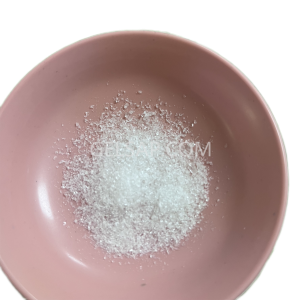Sodium polyacrylate, a superabsorbent polymer, is widely known for its extraordinary ability to absorb and retain large quantities of water relative to its own mass. This fascinating substance is utilized in a variety of applications, ranging from baby diapers to agricultural products. Let’s delve into the science behind sodium polyacrylate, how it works, how it is made, and its longevity.

How Does Sodium Polyacrylate Absorb Water?
The secret to sodium polyacrylate’s water-absorbing prowess lies in its molecular structure. Sodium polyacrylate is a polymer, meaning it consists of long chains of repeating units. These units, derived from acrylic acid, are connected via a process called polymerization. The resulting polymer chains have numerous sodium ions attached to them.
When sodium polyacrylate comes into contact with water, the water molecules are drawn into the polymer network through osmosis. The sodium ions dissociate from the polymer chain, creating negatively charged sites along the polymer backbone. These negatively charged sites attract water molecules, which are polar and have a slight positive charge. This attraction causes the polymer to swell as it absorbs water, turning from a dry powder or granule into a gel-like substance.
How Does Sodium Polyacrylate Work?
The working mechanism of sodium polyacrylate can be broken down into a few key steps:
- Initial Contact: When dry sodium polyacrylate encounters water, the water molecules are attracted to the sodium ions and the hydrophilic (water-attracting) parts of the polymer chain.
- Absorption and Swelling: As water molecules penetrate the polymer structure, they are attracted to the negatively charged sites on the polymer backbone. The polymer chains begin to swell, creating a gel-like consistency as they absorb the water.
- Equilibrium State: The polymer continues to absorb water until an equilibrium is reached. This is when the osmotic pressure (the force driving water into the polymer) is balanced by the elastic forces of the swollen polymer network trying to return to its original state.
How Is Sodium Polyacrylate Made?
The production of sodium polyacrylate involves several steps:
- Polymerization: The process begins with the polymerization of acrylic acid, which involves combining the monomers (single units) of acrylic acid into long polymer chains. This can be achieved through free radical polymerization.
- Neutralization: The acrylic acid polymer is then neutralized with sodium hydroxide to convert it into sodium polyacrylate. This step introduces the sodium ions that are crucial for the polymer’s water-absorbing properties.
- Drying and Grinding: The resulting sodium polyacrylate gel is dried to remove excess water and then ground into a powder or granule form, making it easier to handle and use in various applications.
How Long Does Sodium Polyacrylate Last?
The longevity of sodium polyacrylate largely depends on the specific application and environmental conditions. In a dry, controlled environment, sodium polyacrylate can last indefinitely, maintaining its water-absorbing capabilities. However, once it has absorbed water and formed a gel, its stability can vary:
- In Diapers and Hygiene Products: In these applications, sodium polyacrylate is designed for single use. Once it has absorbed urine or other liquids, it is disposed of after one use.
- In Agricultural Applications: When used in soil to retain moisture, sodium polyacrylate can last for several months to a couple of years. Its longevity is influenced by factors such as soil composition, temperature, and microbial activity.
- Environmental Degradation: Over time, sodium polyacrylate can degrade due to exposure to ultraviolet light, heat, and microbial activity. This degradation process can take several months to years, depending on environmental conditions.
Conclusion
Sodium polyacrylate is a remarkable material with unique water-absorbing properties that make it invaluable in a variety of industries. Its ability to absorb and retain water is due to its polymer structure and the presence of sodium ions, which attract and hold water molecules. The production process involves polymerization and neutralization of acrylic acid, followed by drying and grinding. While sodium polyacrylate can last indefinitely in a dry state, its longevity in practical applications varies based on environmental conditions and usage.
Whether in baby diapers, agricultural products, or other applications, sodium polyacrylate continues to demonstrate the incredible potential of polymer science in solving everyday challenges.

